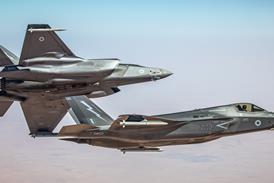EADS (European Aeronautic Defence and Space) and ITP are exploring the use of Eurofighter prototype DA1 to carry out flight tests of the Spanish engine company's Eurojet EJ200 thrust-vectoring nozzle from late 2002.
Meanwhile, bench testing of the nozzle on an EJ200 mounted in an altitude chamber at Stuttgart technical university in Germany has been completed successfully.
Daniel Ikaza, ITP project manager nozzles, says funding is being sought for a Eurofighter test programme that could involve DA1, which is to complete its flight development duties in about two years. Another possibility would be to use a production aircraft from a customer nation, he says.
The Spanish engine manufacturer has stepped up its marketing to convince the four customer nations of the benefits of thrust-vectoring, particularly throughout the "normal" flight regime.
"We can't wait for a customer to come knocking on the door - we have to provoke a flight test programme," says Ikaza. "We are now at the point where the next logical step is a flight demonstration."
The EJ200 is also the leading powerplant candidate for EADS' planned Mako advanced trainer/ light attack aircraft. Ikaza says the airframe company is discussing the option of thrust-vectoring with potential customers because there could be a requirement for thrust-vectoring-equipped trainers if the system is adopted for fighters.
The Stuttgart altitude tests comprised 22 engine hours during 18 runs over 10 days and were designed to simulate "representative points throughout the Eurofighter envelope", says Ikaza.
These exercises included tests to validate the potential of thrust-vectoring to improve Eurofighter's "supercruise" capabilities at speeds of up to M1.4. "It will make life much, much easier for supercruise," says Ikaza.
The bench trials were also used to validate the MTU-developed integrated thrust-vectoring control system.
Source: Flight International




















